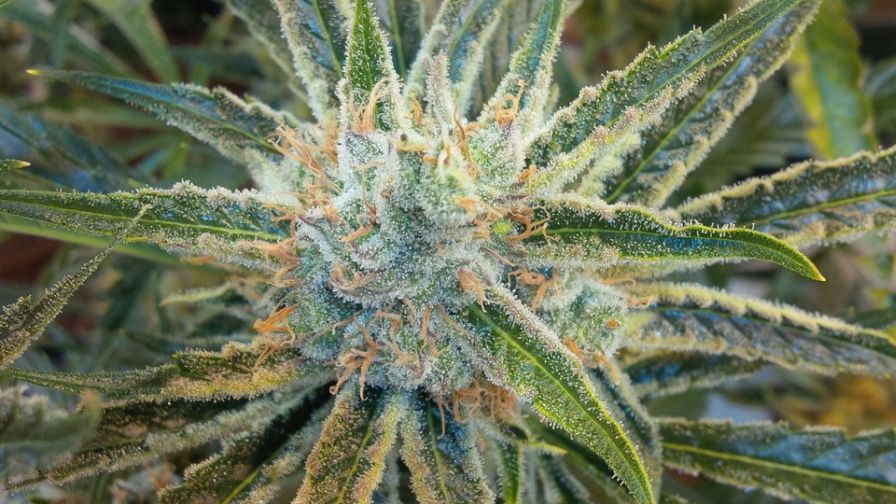Weighing the Pros and Cons of Premixed Cannabis Fertilizers
 Proper plant nutrition is vital to growing a healthy crop, so fertilizer selection should be a key consideration for every cannabis cultivation business. Growers have two options when it comes to feeding their plants. They can buy a complete premixed fertilizer or make their own.
Proper plant nutrition is vital to growing a healthy crop, so fertilizer selection should be a key consideration for every cannabis cultivation business. Growers have two options when it comes to feeding their plants. They can buy a complete premixed fertilizer or make their own.
Premixed fertilizers are concentrated nutrient solutions that growers buy and dilute with water before sending it out to the crop. Custom fertilizers are made in-house by measuring and mixing water-soluble plant minerals into concentrated stock solutions. Each option differs in cost, complexity, and risk.
Premixed cannabis fertilizers offer growers many advantages, including:
- Simplicity: Most premixed fertilizers are pretty straightforward. They use a two-part formulation for vegetative growth and a different two-part formulation for flowering growth. Supplements like cal-mag provide the crop with additional calcium and magnesium, while bloom boosters help jump-start flowering by temporarily elevating phosphorus and potassium levels.
- Ease of Use: Mixing instructions are simple. Labels suggest dilution ratios, and their company websites offer feeding schedules that indicate which products to use for each week of production.
- Labor savings: The simplicity and ease of use of premixed fertilizers inevitably result in labor savings. Diluting concentrated fertilizer is a quick task, so growers have more time to dedicate to other activities.
However, premixed cannabis fertilizers can present some challenges as well:
- Expense: Premixed nutrient solutions can exceed $0.50 per gallon when diluted to working strength. What’s more, these concentrated solutions are mostly water. The numbers on the label indicate what percent of the bottle’s contents are actually fertilizer, and it’s often less than 10%.
- Commitment: Some companies split up essential plant minerals into several different products instead of supplying complete nutrition in as few bottles as possible. To ensure their crop receives a full nutritional profile, growers may need to commit to using lots of different products.
- Labeling: Unscrupulous companies may only indicate the fertilizer ingredients on the label. Unlabeled, non-fertilizer ingredients can place a grower at risk of compliance and failed lab tests. Years ago, it was determined that a popular cannabis fertilizer supplement contained an unlabeled plant growth regulator (PGR), resulting in crops with short internodes and extra-large flowers. Very few PGRs are labeled for edible foods, much less medicinal plants destined for combustion.
The alternative to premixed cannabis fertilizers is what most commercial growers have used for decades: in-house recipes. Making your own fertilizer holds many advantages over buying premixed, including:
- Cost: Making your fertilizer can drop the costs of a gallon of working strength solution to just $0.05. Cutting fertilizer expenses by 90% can go a long way toward reducing a company’s cost of production.
- Control: Mixing fertilizer recipes in-house gives growers complete control over what goes into their plants. Each mineral can be adjusted down to the part per million desired, and changes can be made as often as necessary. There’s no risk of unlisted mystery ingredients or worries about quality control because the entire process happens in front of the grower.
- Less waste: Most mineral salts are purchased in 25 to 50-pound bags, and micronutrients are sold in small buckets. A little goes a long way. Using premixed fertilizers usually involves purchasing (and disposing of) lots of plastic bottles.
Despite the advantages of making your own fertilizer, it may not be appropriate for every grower or situation. Some disadvantages may include:
- Minimum purchase requirements: Since fertilizer salts are sold in bulk, small growers may be forced to buy quantities of raw ingredients that they’ll never use. If you only need a few grams, but you’re forced to buy a 50-pound bag, that doesn’t make good business sense.
- Measuring mistakes: Innocent mistakes made while measuring fertilizer ingredients can have serious ramifications when fed to the crop. Accidently adding too much of an element could potentially burn plants, and the grower wouldn’t know a mistake was made until it’s too late.
- Labor: Measuring and mixing in-house cannabis fertilizers takes more time than diluting premixed fertilizers. There’s more work in sourcing the ingredients and more time to prepare the solution. For some operations, these extra hours can really add up.
So, what’s a grower to do? Fortunately, there isn’t one correct answer. Different solutions are appropriate for different cultivation businesses. Simply weigh the pros and cons for your particular situation, and then decide. If it doesn’t work out, you can always switch to the alternative.
To help ensure your success, keep these tips in mind:
Buying premixed fertilizer
- Trial on a small test plot first
- Buy in bulk, but not too much; organic supplements can go bad
- Periodically test fertilizer to ensure consistency
- Avoid companies that require you to buy 8-10 different products
Making your own fertilizer
- Use an online nutrient calculator
- Pair with leachate or sap analysis testing every two weeks
- If you’re new to making fertilizer, work with a consultant or experienced grower
- Test, test, and re-test to be absolutely sure of what you’re sending out to the crop
Fertilizer selection is a critical decision for any grower, but it doesn’t need to be overwhelming. If you’re prudent about weighing the costs, complexities, and risks of each option, you’ll be well on your way to a happy crop and a healthy bottom line.









